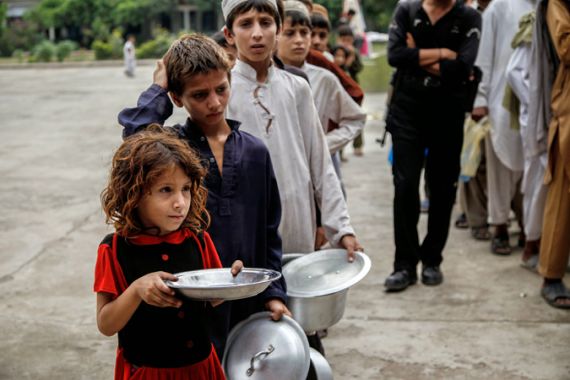Thirty percent of the world’s food wasted
An estimated 1.3 billion tonnes of food is lost or wasted annually as 800 million people go hungry.

Published On 31 Oct 2014
Rome, Italy – Enough food to feed two billion people is wasted every year, leading UN agencies to create a new interactive platform to try to reduce the losses, which could easily feed the world’s 800 million who go hungry.
An estimated 1.3 billion tonnes of food, or roughly 30 percent of global production, is lost or wasted annually, according to the UN Food and Agricultural Organization (FAO). It remains unclear how effective the new platform will be in solving the problem, but analysts say it is a step in the right direction.
The Global Community of Practice of Food Loss Reduction web portal, launched last week, allows users to get information about ways of reducing waste.
“We need to close the gap between people being aware of this problem and what they do when they are standing in the grocery store or in the kitchen,” said Dana Gunders, a scientist with the Natural Resources Defense Council, a US environmental advocacy group.
“Awareness is the first step the more specific the information [available on the portal] the more helpful it is in terms of reductions.”
More than 40 percent of root crops, fruits and vegetables, 20 percent of oil seeds, and 35 percent of fish never reach the mouths of hungry people, the FAO reported.
In developed countries, food waste usually occurs in homes or restaurants, when consumers discard products they believe have gone rotten, or in grocery stores if products don’t look picture perfect due to slight blemishes.
We need to close the gap between people being aware of this problem and what they do when they are standing in the grocery store or in the kitchen.
Most of the developing world’s spoilage happens during storage or transport, as infrastructure for refrigeration and preservation is often inadequate.
Backers hope information on the new platform will help farmers to “share experiences to concretely reduce losses”, the FAO’s Anthony Bennett said.
Solutions in the field
If farmers in Uganda, for example, find a new technique to reduce spoilage, they can upload information about the project to the portal so that others can learn from it.
As part of the initiative, the World Food Programme has provided metal silos and sophisticated storage bags to 400 small farmers in Burkina Faso and Uganda.
Better storage facilities reduced post-harvest waste to less than two percent during a 90-day trial period, and the WFP is now scaling up the programme by taking it to 41,000 farmers and aiming for a 70 percent reduction in post-harvest losses.
At first, the farmers were sceptical about changing techniques they had used for generations, in favour of the new silos and air-tight, waterproof storage bags.
“After watching the grain in the traditional storage units deteriorate quickly, they expected the same [or worse] to be occurring inside the new units,” said Simon Costa, the project’s manager. “Their disbelief quickly turned to jubilation when they discovered their harvest was in perfect condition.”
A manual showing how to build similar silos is now available online.
Appropriate technologies like this don’t just keep food fresh for longer, Gunders said, they also help farmers to manage market cycles more effectively.
Many farmers want to hold some of their produce for some time after the harvest, as prices rise when less food is available on the market.
Small farmers are some of the worst affected by hunger in many developing countries.
Gunders studied pea farmers in several African countries, who didn’t have access to the silos or air-tight storage bags, spraying toxic pesticides directly on the food after harvest.
“Kids were eating the peas and literally dying from the pesticides,” she said. “The sealable bags eliminated the need for this and allowed farmers to store the crops for longer and sell at a better price.”
This article first appeared on the Thomson Reuters Foundation news service
Source: Reuters